Graduate student research spotlight
Madeline Carine
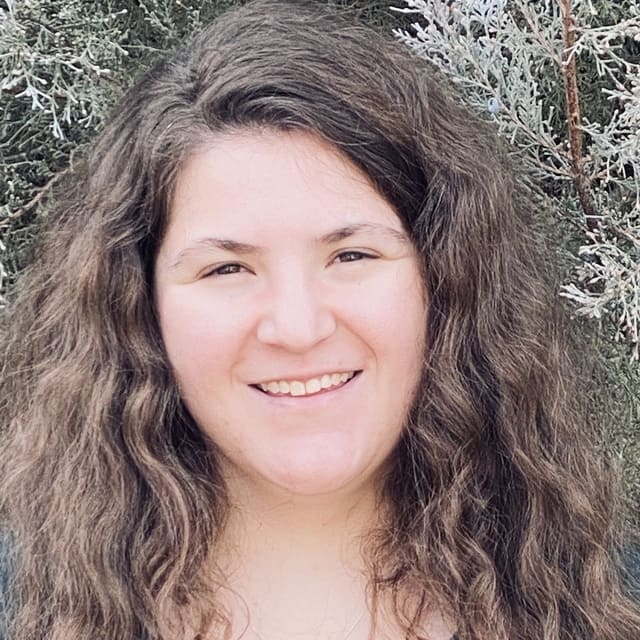 Madeline is a graduate research assistant in the Nevada Water Innovation Lab under Dr. Krishna Pagilla. Together, they have been working to investigate the community prevalence of SARS-CoV-2 genetic markers in wastewater linked to COVID-19 disease. Their research primarily pertains to the application of wastewater-based monitoring to optimize and provide reliable public health tools that community leaders may use to inform public health decisions. They have successfully demonstrated the feasibility of wastewater to provide a seven-day advanced warning system for increased COVID-19 concentrations. Additionally, their work with the School of Medicine has demonstrated the ability of wastewater to provide an overview of the SARS-CoV-2 variants existing within the community and, again, serve as an early warning system for potential novel and concerning variants. Ongoing monitoring has expanded to include other viruses of public health concern, including Monkeypox, RSV, and Norovirus, among other pathogens. Their research continues on method optimization and determining ideal methods for utilizing wastewater-based monitoring tools for advanced water reuse applications.
Madeline is a graduate research assistant in the Nevada Water Innovation Lab under Dr. Krishna Pagilla. Together, they have been working to investigate the community prevalence of SARS-CoV-2 genetic markers in wastewater linked to COVID-19 disease. Their research primarily pertains to the application of wastewater-based monitoring to optimize and provide reliable public health tools that community leaders may use to inform public health decisions. They have successfully demonstrated the feasibility of wastewater to provide a seven-day advanced warning system for increased COVID-19 concentrations. Additionally, their work with the School of Medicine has demonstrated the ability of wastewater to provide an overview of the SARS-CoV-2 variants existing within the community and, again, serve as an early warning system for potential novel and concerning variants. Ongoing monitoring has expanded to include other viruses of public health concern, including Monkeypox, RSV, and Norovirus, among other pathogens. Their research continues on method optimization and determining ideal methods for utilizing wastewater-based monitoring tools for advanced water reuse applications.
Matthew Bolino
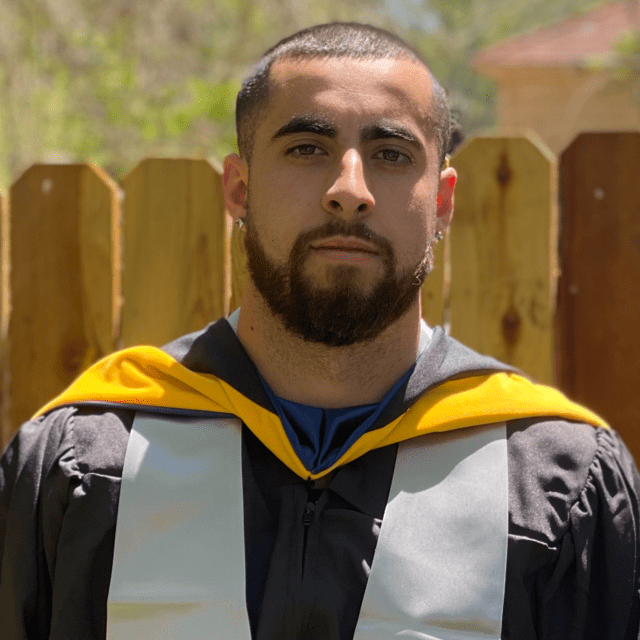 Matthew is a research assistant in Dr. Steven Frese's lab for the Department of Nutrition, where he works on multiple projects related to the gut microbiome and human health. One project is focused on host-microbial interactions and how the epithelium communicates with microbe metabolites to keep inflammation down. Another project is focused on how we can increase the bioactive fiber content of food to help decrease diet-induced disease by targeting glycans found on dietary protein. In doing so, he also mentors two undergraduate students to ensure these projects are moving forward and collaborates with his former advisor, Dr. Bradley Ferguson, on one of these projects.
Matthew is a research assistant in Dr. Steven Frese's lab for the Department of Nutrition, where he works on multiple projects related to the gut microbiome and human health. One project is focused on host-microbial interactions and how the epithelium communicates with microbe metabolites to keep inflammation down. Another project is focused on how we can increase the bioactive fiber content of food to help decrease diet-induced disease by targeting glycans found on dietary protein. In doing so, he also mentors two undergraduate students to ensure these projects are moving forward and collaborates with his former advisor, Dr. Bradley Ferguson, on one of these projects.
Amber Marshowsky
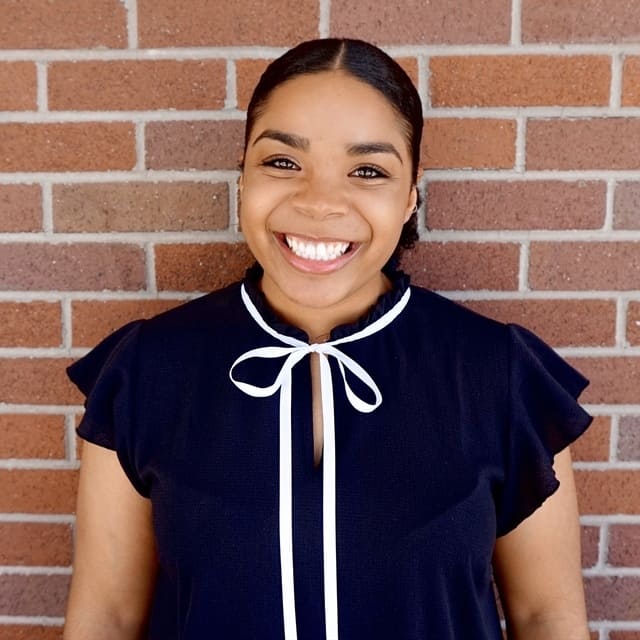 Amber's research, titled "Increasing the Cultural Competency and Responsiveness of Early Childhood Education Professionals through Professional Development: An Exploratory Study," examines the impact of professional development (PD) training experience on individuals' development of cultural proficiency and/or culturally responsive practices. Her research is motivated by the understanding that the creation of equitable and culturally responsive early learning environments for all children requires a change to both institutional and interpersonal systems.
Amber's research, titled "Increasing the Cultural Competency and Responsiveness of Early Childhood Education Professionals through Professional Development: An Exploratory Study," examines the impact of professional development (PD) training experience on individuals' development of cultural proficiency and/or culturally responsive practices. Her research is motivated by the understanding that the creation of equitable and culturally responsive early learning environments for all children requires a change to both institutional and interpersonal systems.
The ongoing PD training focused on diversity, equity, inclusion, and justice (DEIJ) and the sample in this study included 46 early childhood professionals (administrators, center-based teachers, and home visitors) from one university-affiliated early childhood program in the Western United States. During the PD's cultural proficiency and culturally responsive practice assessment were administered with approval from IRB to collect and analyze de-identified responses to these measures from all consenting PD training participants. The research tracks trends that aim to increase pre-service and in-service training for early childhood education (ECE) professionals as it focuses on issues of DEIJ. Evidenced-based guidelines for the content and duration of such training are noticeably absent from the current research literature. To Amber's knowledge, there have not been any published, peer-reviewed studies examining relations between features of DEIJ trainings and changes in ECE practitioners’ beliefs or behaviors. Unfortunately, delays caused by the COVID-19 pandemic and high teacher turnover led to numerous interruptions of this study. Thus, it is too soon to know whether participation in the PD program impacts the cultural competency of ECE professionals. View her poster.
Parvaneh Aliniya
 Parvaneh's research focuses on enabling machines to understand the visual world. To this end, she is working on the intersection of computer vision and natural language processing. Generally, for a given image, we mostly rely on using the information in the picture, pixel values, to perform a specific task, such as finding the locations of all the objects in the image; however, it would be more efficient if we leverage textual description of a scene. She intends to test using a large set of pictures paired with the descriptions to train a model that could describe a new given image with sentences.
Parvaneh's research focuses on enabling machines to understand the visual world. To this end, she is working on the intersection of computer vision and natural language processing. Generally, for a given image, we mostly rely on using the information in the picture, pixel values, to perform a specific task, such as finding the locations of all the objects in the image; however, it would be more efficient if we leverage textual description of a scene. She intends to test using a large set of pictures paired with the descriptions to train a model that could describe a new given image with sentences.
As the first step toward this goal, she hopes to find an effective way to match the image to the text. Images have pixel values in different locations, and the text contains words. Her first question is how to find the relation between words in the text and parts of the image. To answer this question, she is working on the image-to-text matching problem in which we first convert images and texts to the same modality, and then can measure how close images (image patches) and text (words) are.
Finally, for a new image, the approach can find the words that describe images the best in terms of objects in the scene and their relation.
Med students create a healthy curriculum for Washoe County high school students
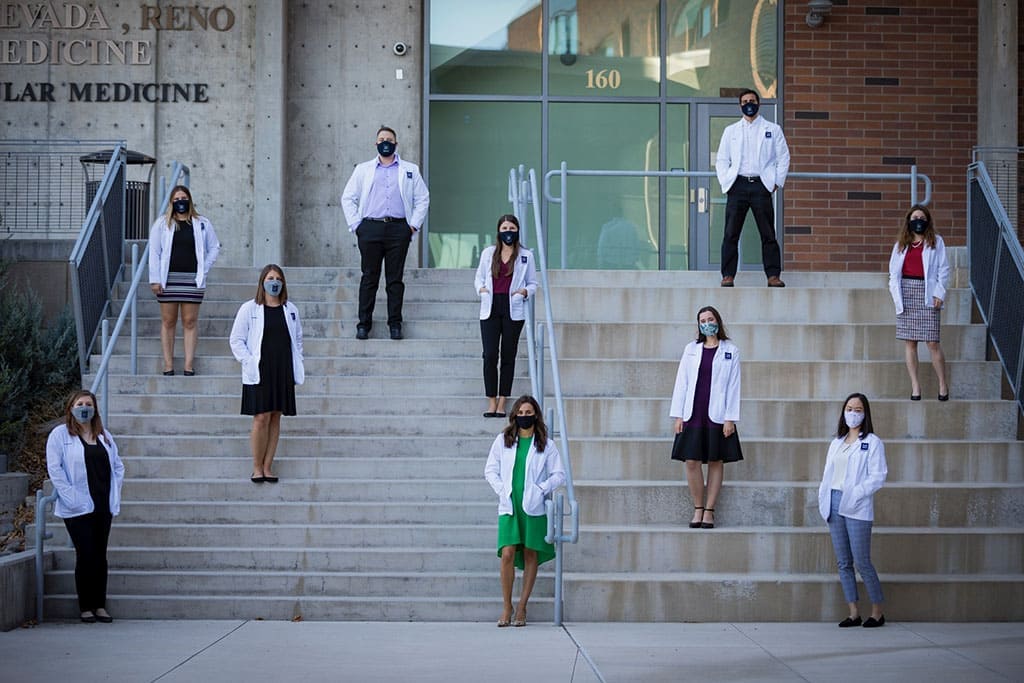 A team of medical students at the University of Nevada, Reno School of Medicine is creating and teaching original curriculum to promote preventative care and healthy lifestyle choices among high school students in the Washoe County School District. This initiative, The Healthier Nevada Project, is powered by third-year medical students Alexa Allen, Matt Biondi, Brandon Conner, Megan Rescigno and Katie Weller; and second-year medical students Ariel Hierholzer, Erica Kim, Sydney Laughton, Justine Resnik and Kendal Warner.
A team of medical students at the University of Nevada, Reno School of Medicine is creating and teaching original curriculum to promote preventative care and healthy lifestyle choices among high school students in the Washoe County School District. This initiative, The Healthier Nevada Project, is powered by third-year medical students Alexa Allen, Matt Biondi, Brandon Conner, Megan Rescigno and Katie Weller; and second-year medical students Ariel Hierholzer, Erica Kim, Sydney Laughton, Justine Resnik and Kendal Warner.
This group distills complicated medical topics into fun activities and class discussions which are interactive and accessible to all students. The modules are designed to fulfill the Nevada Academic Content Standards for Health. In the last two years, this project has reached hundreds of students in health and biology classes at Galena High School, Reno High School and Sparks High School, with plans to expand even further in the community.
The research arm of their project aims to determine whether these lessons change students' attitudes toward doctors, as well as their willingness to discuss each topic with a doctor. The group used pre-test and post-test surveys with a Likert scale to measure responses. The preliminary analysis shows that each module was effective in changing students' attitudes. The team of medical students is now in the process of writing a manuscript, with lots of room to grow and expand over the next few years.
The Heathier Nevada Project is established as a committee at the University’s School of Medicine so that future medical students can learn to teach and volunteer at local schools.
Researching how adverse childhood experiences impact college students
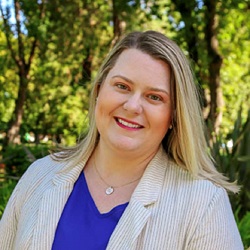
Lara Falkenstein, Masters student in Public Health, studies the impacts of adverse childhood experiences (ACEs) on the mental and physical health of college students. Our childhood experiences shape us in many ways as college students as we evolve into young adulthood but the toxic stress from these experiences may also impact our long-term health and well-being. Early screening and connections to mental, social, and behavioral health resources in college may help to improve our short and long-term health.
Lara’s research explores the prevalence of ACEs among college students through early intervention and timely screening which may lead to resilience, increased ability to recover from adversity, and moderate the biological impacts of toxic stress. Her research centers around the Adverse Childhood Experiences screening tool, which provides ten categories of potentially traumatic experiences that impact levels of toxic stress in our bodies leading to an increased risk for depression, anxiety, heart disease, risk of injury, food and/or housing insecurity, academic success, substance misuse, diabetes, asthma, and possible suicide risk. Lara is piloting the screening tool in a college health center and developing a toolkit for future college health providers to integrate the screening with mental health services, clinical services, wellness services, and crisis assistance services for students.
Studying special education caseload policies
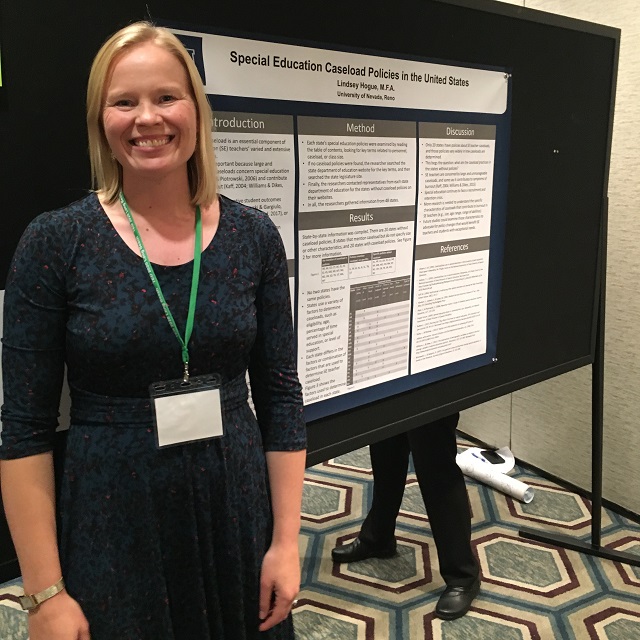
Lindsey Hogue, Ph.D. student in Special Education, has been reviewing special education caseload policies state by state to understand the impact of caseloads on special education teacher (SET) burnout. She recently completed a study called “A review of special education caseload policies state by state: What impact do they have?” This study, co-authored by Dr. Shanon Taylor in the College of Education, was published in the Journal of Special Education Leadership in March 2020. Dr. Taylor and I presented this research at the Teacher Education Division of the Council for Exceptional Children (TED) conference in November 2019. Additionally, I won the Kaleidoscope Award for doctoral research at TED for this study.
A caseload is a group of students with disabilities that a SET is responsible for managing. Case management involves developing, managing, and implementing Individual Education Programs (IEPs), as well as individualizing instruction and supporting students in general education settings. In addition to these duties, SETs must communicate frequently with parents and staff for each student on their caseload.
Caseloads are important because caseload issues have emerged as a concern for SETs in several studies and there is evidence that links caseload issues to symptoms of teacher burnout. Special education is an area of critical shortage in 46 states, and burnout is an issue in the field as well. Burnout can lead to negative student outcomes, poor IEP implementation, or attrition. Caseloads are determined at the state level, and each state has different requirements regarding caseloads for SETs. Because caseload policies by state have not been examined since 2003, this study updated the literature on the current guidelines regarding SET caseloads for each state. In all, information was gathered for 48 states and specific policies about caseloads were found for 20 states.
This study found that caseload policies for each state varied widely, which demonstrates how much special education practices vary state by state. The literature connecting caseload issues to burnout highlights the importance of the issue. More research is needed to understand the specific characteristics of caseloads that contribute to burnout in SETs (e.g., size, age range, range of abilities).
Restoring sagebrush habitats after wildfires
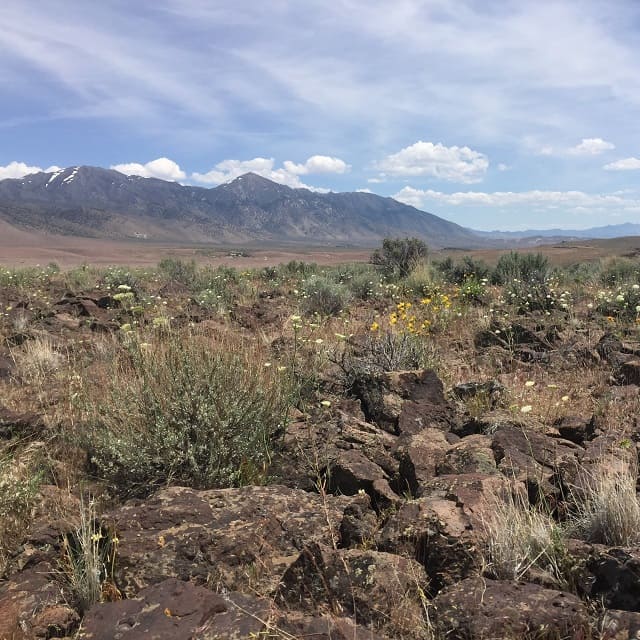
Alison Agneray, Ph.D. student in Ecology, Evolution, and Conservation Biology, studies how to choose the best seed sources and mixes to restore sagebrush habitats after fires. After fire in the sagebrush steppe, many state and federal agencies plant seeds in burned areas to prevent invasion from competitive, flammable weeds. Alison’s research focuses on how to choose the best seed sources and mixes to restore these degraded habitats, and we have found some promising seed sources from the Western Great Basin.
In addition to finding excellent populations of single species, Alison is investigating whether restoration is more successful if seeds of all species are sourced from a single plant community that may share evolutionary history. This is an innovative approach to restoration in this region. The current practice is to blend seeds from different species from multiple locations. Evidence suggests we may have more success using seeds collected from single sites that have evolved together.
Alison has conducted fifteen experiments in the last three years to determine which traits are associated with seed success and which groups of plants perform best to restore arid environments. The focus is on native grasses, shrubs, and forbs, flowering plants key to Great Basin pollinators.
This work is already translating into action in restoring damaged ecosystems. Alison presented the results of this work to the Bureau of Land Management, Forest Service, and Fish and Wildlife Service, who funded seed collection from our top-performing sources, despite the setbacks from COVID-19. Then in the fall of 2020, four of these sites burned in this year’s wildfires. Alison is now working to increase these seed collections and potentially restore these newly devastated lands.
Understanding the impact of mitochondria on Parkinson's disease
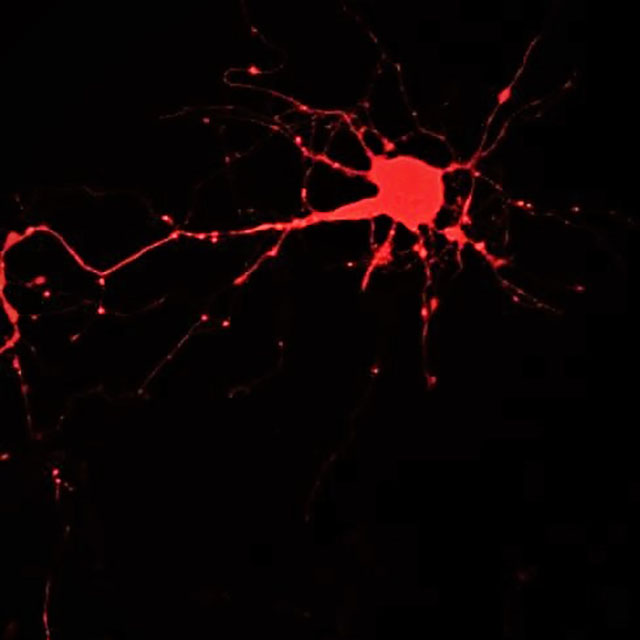 Ria Anana, Ph.D. student in Cell and Molecular Biology, studies Parkinson’s disease and Mitochondrial Dysfunction. Parkinson’s disease (PD) is a progressive, chronic, and incurable neurodegenerative disorder of the nervous system that affects movement and leads to movement-related symptoms like tremors, rigidity, imbalance, etc. A pathological hallmark of PD is the loss of dopamine-producing (dopaminergic) neurons from a specific area in the midbrain called as the Substantia nigra. Additionally, PD pathophysiology is linked to a loss of the function and structure of mitochondria (the powerhouses that provide energy to neurons and other cells). A proper level of mitochondria is required to maintain/protect the dendritic networks of neurons (short branches of a nerve cell) from oxidative stress and is regulated by a process termed mitochondrial trafficking.
Ria Anana, Ph.D. student in Cell and Molecular Biology, studies Parkinson’s disease and Mitochondrial Dysfunction. Parkinson’s disease (PD) is a progressive, chronic, and incurable neurodegenerative disorder of the nervous system that affects movement and leads to movement-related symptoms like tremors, rigidity, imbalance, etc. A pathological hallmark of PD is the loss of dopamine-producing (dopaminergic) neurons from a specific area in the midbrain called as the Substantia nigra. Additionally, PD pathophysiology is linked to a loss of the function and structure of mitochondria (the powerhouses that provide energy to neurons and other cells). A proper level of mitochondria is required to maintain/protect the dendritic networks of neurons (short branches of a nerve cell) from oxidative stress and is regulated by a process termed mitochondrial trafficking.
It is vital to understand the molecular mechanisms underlying mitochondrial dysfunction in order to study their impact on dendrite pathology and neurodegeneration in PD. Therefore, our research attempts to investigate the role of two specific neuroprotective proteins that are implicated in PD: PINK1 (PTEN induced Kinase-1) which is a mitochondrial- localized protein and PKA (Protein Kinase A) which regulates mitochondrial functions and neuronal survival. Mutations in PINK1 are associated with early-onset PD and deregulated PKA signaling has also been reported in PD models. The overarching goal of Ria’s research is to unveil novel molecular mechanisms by which PINK1-PKA signaling pathway enhances dendritic mitochondrial trafficking and content, and how altered mitochondrial trafficking contributes to loss of dendrites in midbrain dopamine neurons. Therefore, achieving correct mitochondrial trafficking in dendrites would promote dendritic homeostasis and neuroprotection.
The inclusive purpose of this research will not only increase our understanding of the basic biology of these proteins but will also lay a strong foundation for development of novel neuroprotective and mitoprotective therapies for preventing the onset of neurodegeneration, reversing mitochondrial dysfunction and conferring neuroprotection in Parkinson’s disease.
Researching the impact of COVID-19 on mental health
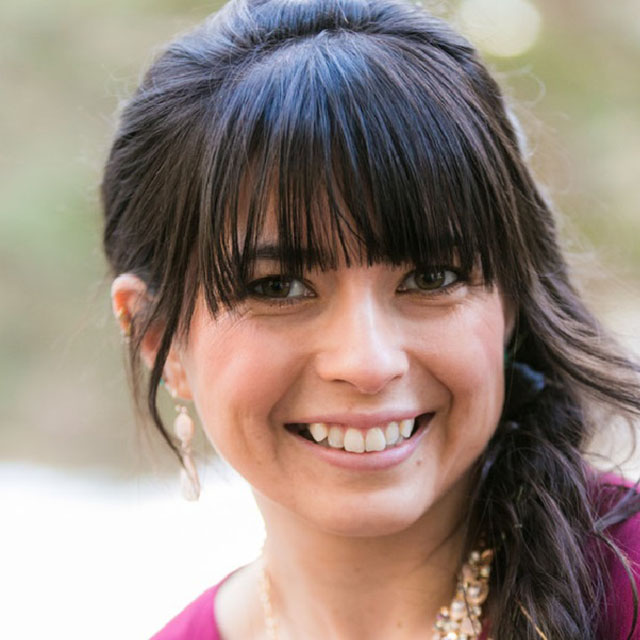 Sarah Hartzell, Ph.D. student in Public Health, is working on a project with Sarah Friedman, Ph.D. on opioid misuse and urine drug testing. At the NPHS 2020 Annual Conference, Sarah presented a component of this work. They also recently had a manuscript published in Substance Use & Misuse entitled "Urine Drug Testing among Opioid-Naïve and Long-Term Opioid Nevada Medicaid Beneficiaries."
Sarah Hartzell, Ph.D. student in Public Health, is working on a project with Sarah Friedman, Ph.D. on opioid misuse and urine drug testing. At the NPHS 2020 Annual Conference, Sarah presented a component of this work. They also recently had a manuscript published in Substance Use & Misuse entitled "Urine Drug Testing among Opioid-Naïve and Long-Term Opioid Nevada Medicaid Beneficiaries."
Sarah has been researching aspects of COVID's impact on mental health as well. She has been working with a colleague, Molly Hagen, and has collected data from University students on COVID's impact this past spring. They have already submitted a manuscript to a journal and are working on a second manuscript.
Based on existing anecdotal evidence of surges in calls to suicide hotline during COVID-19’s presence in the US, this has led to an awareness of the need for better public mental health preparedness for future disasters that, like COVID-19, have far reaching consequences to daily life. Due to this issue, Sarah submitted a research proposal to the HCCI and it was accepted to gain access to a national database of EHR data and claims records. She is going to be using this to investigate whether COVID-19 had impacted the suicide attempts resulting in ER visits in the US. This will be a large data size that will enable me to produce more generalizable results. The goal of this study is to examine an extreme and devastating way the pandemic can impact mental health, with implications for national mortality.
Empowering rural communities in Tanzania
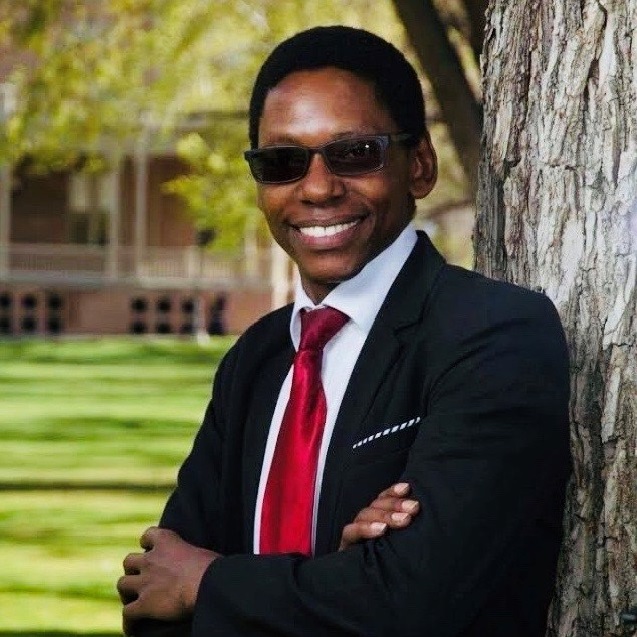 Liberatus J. Rwebugisa, Ph.D. student in Educational Leadership, created a qualitative case study focusing on how to effectively eliminate poverty and empower communities in rural Tanzania. Emphasizing true collaboration and partnership, Rwebugisa evaluated Self-Determination Theory as a route to effective implementation of empowerment in impoverished areas.
Liberatus J. Rwebugisa, Ph.D. student in Educational Leadership, created a qualitative case study focusing on how to effectively eliminate poverty and empower communities in rural Tanzania. Emphasizing true collaboration and partnership, Rwebugisa evaluated Self-Determination Theory as a route to effective implementation of empowerment in impoverished areas.
“When we talk about focusing on empowerment, there has to be genuine interactive participation of the poor people to recognize they have time, they have talent, they know they can catch up,” Rwebugisa said. Many larger organizations tend to create initiatives where participation from local communities is token. Rwebugisa’s approach differed by focusing on a community-led initiative, Self-Determination Theory and legitimate collaboration with local partners. The case study began with a needs assessment of a rural community in Tanzania, where participants identified critical issues, such as a lack of collaboration between teachers, parents and other community members.
By conducting interviews two years after the initial needs assessment among local partners to measure feelings of relatedness, competence and autonomy, his findings demonstrated that community members enjoyed their involvement and participated from their own volition.
Rwebugisa’s other achievements include using a grant to renovate a school building into a library and running a microfinance program that includes teaching skills like budgeting in addition to creating small loans for income-generating activities.
Increasing nutritional education skills for high school students with disabilities
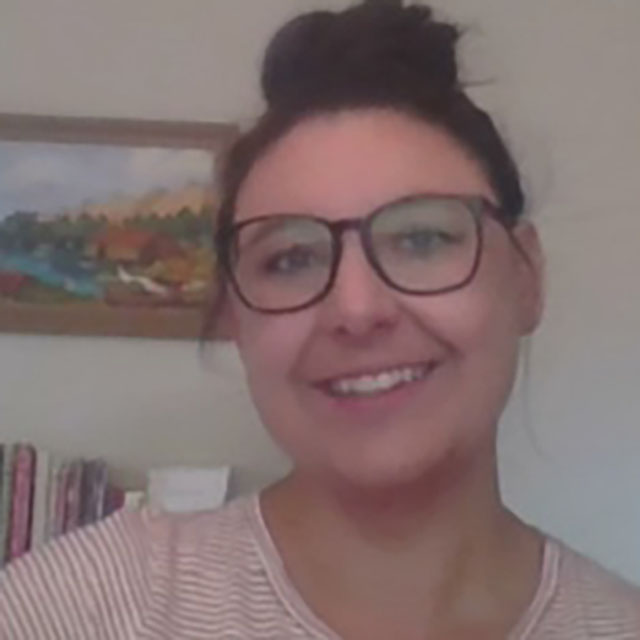 Brianna Grumstrup, Ph.D. student in Special Education, focuses her research on food and dietary behaviors in children and adolescents. Nutrition education in schools can provide children and adolescents with the information and skills to develop food choices and dietary behaviors that influence health and academics. An abundance of evidence suggests this is especially crucial for individuals with intellectual and multiple disabilities. One subset of nutrition education is knowledge about the five main food groups of grains, proteins, dairy, fruit, and vegetables.
Brianna Grumstrup, Ph.D. student in Special Education, focuses her research on food and dietary behaviors in children and adolescents. Nutrition education in schools can provide children and adolescents with the information and skills to develop food choices and dietary behaviors that influence health and academics. An abundance of evidence suggests this is especially crucial for individuals with intellectual and multiple disabilities. One subset of nutrition education is knowledge about the five main food groups of grains, proteins, dairy, fruit, and vegetables.
Brianna’s study investigates if the system of least prompts is effective to increase a nutrition education skill for high school students with intellectual and multiple disabilities. The student is first shown a PowerPoint slide that has a group of 4 foods, each representing one of the main five groups, with a blank box indicating one missing. The student must then name the food representing the missing food group. In this manner, the participant will complete a balanced “meal” by choosing the missing food from an array of five choices at the bottom of the screen. The independent variable is the system of least prompts, a systematic teaching method whereby the student is first given the opportunity to respond independently. Upon no response or an incorrect response, the instructor is ready with pre-determined prompts to ensure the correct answer is eventually reached.
Alexis Tudor creates Python program to make the process of differential photometry faster and easier
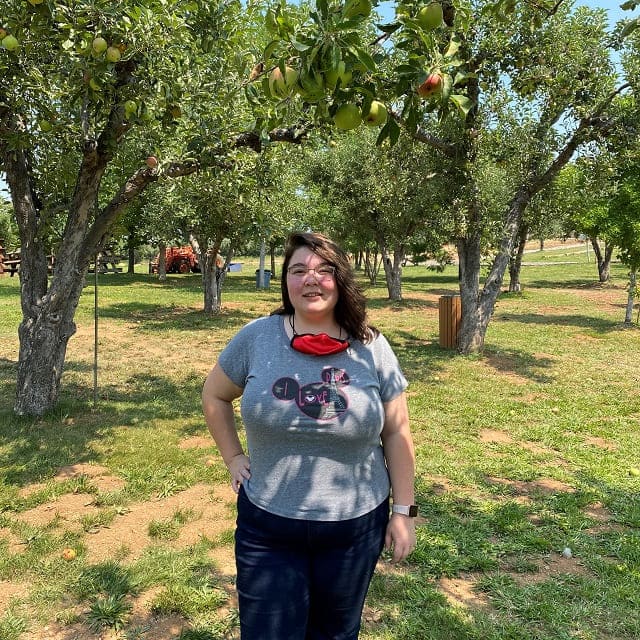 Alexis Tudor is a Masters student in Computer and Science Engineering and is studying the changing of stars. It may seem to us on Earth that the stars above do not change or falter. However, this is not always the case. Many stars can blow up or fade out, they are eclipsed by other stars and occasionally undergo incredible transformations. One of the best tools to measure the changing of the stars is the light curve, a graph depicting the brightness of star. The process to calculate the brightness of a star is called differential photometry, and it involves comparing a target star to four to eight other stars of known brightness. Calculating the brightness of a star takes a considerable amount of time before one even considers having to take the brightness of a star over multiple nights.
Alexis Tudor is a Masters student in Computer and Science Engineering and is studying the changing of stars. It may seem to us on Earth that the stars above do not change or falter. However, this is not always the case. Many stars can blow up or fade out, they are eclipsed by other stars and occasionally undergo incredible transformations. One of the best tools to measure the changing of the stars is the light curve, a graph depicting the brightness of star. The process to calculate the brightness of a star is called differential photometry, and it involves comparing a target star to four to eight other stars of known brightness. Calculating the brightness of a star takes a considerable amount of time before one even considers having to take the brightness of a star over multiple nights.
Alexis’s research centers around a Python program she created, Photometry+, that is designed to make the process of differential photometry faster and easier. Using Photometry+ she has been able capture the light curve of an exploding white dwarf as it went nova. Her research now focusses on how to combine human-computer interaction with astronomy know-how to create a work that not only completes differential photometry, but is also easy to use so that someone with no experience with differential photometry can not only use it but also learn the process through using Photometry+.
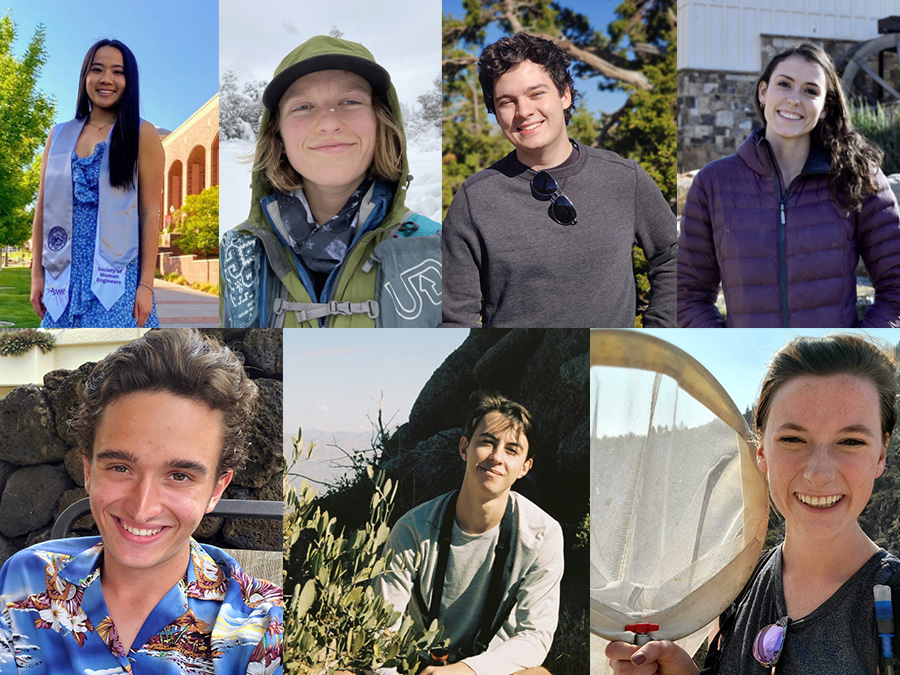
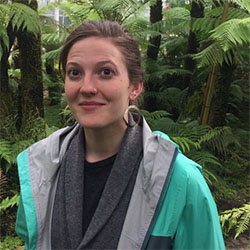 Zoe Haskell,
Zoe Haskell, 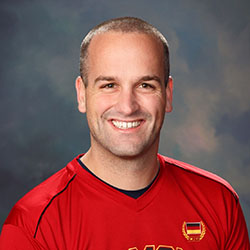 Erick Luerken joined our
Erick Luerken joined our 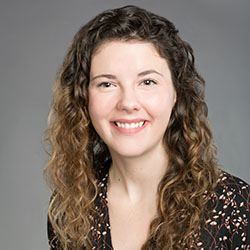 Victoria Knoche, Interdisciplinary Social Psychology Ph.D. Program
Victoria Knoche, Interdisciplinary Social Psychology Ph.D. Program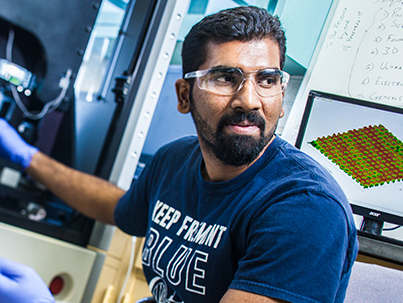
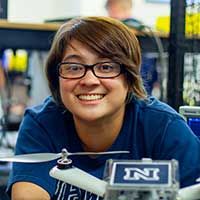
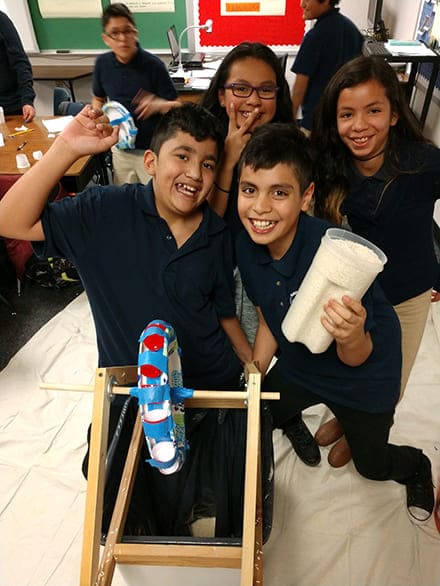 "As the need for a STEM-educated workforce becomes more readily acknowledged, K-12 education across the country must value engineering education as part of the overall strategy to prepare students more fully for participation in the 21st century economy. This valuing of engineering is evidenced in its specific inclusion in Next Generation Science Standards. Studies show that engineering education increases the STEM skill development process and overall competency in science.
"As the need for a STEM-educated workforce becomes more readily acknowledged, K-12 education across the country must value engineering education as part of the overall strategy to prepare students more fully for participation in the 21st century economy. This valuing of engineering is evidenced in its specific inclusion in Next Generation Science Standards. Studies show that engineering education increases the STEM skill development process and overall competency in science.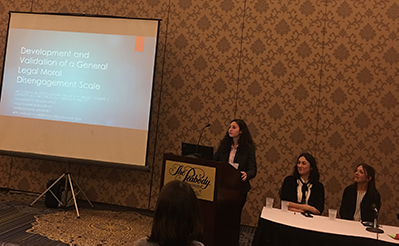 "Confrontations between police and racial minorities have received not only nationwide attention but also attention on the University’s campus. In an effort to examine diversity in perceptions of police, Alicia DeVault and I are working on a project that examines how diverse racial groups perceive police rule-bending and how this influences people's perceptions of police legitimacy.
"Confrontations between police and racial minorities have received not only nationwide attention but also attention on the University’s campus. In an effort to examine diversity in perceptions of police, Alicia DeVault and I are working on a project that examines how diverse racial groups perceive police rule-bending and how this influences people's perceptions of police legitimacy. 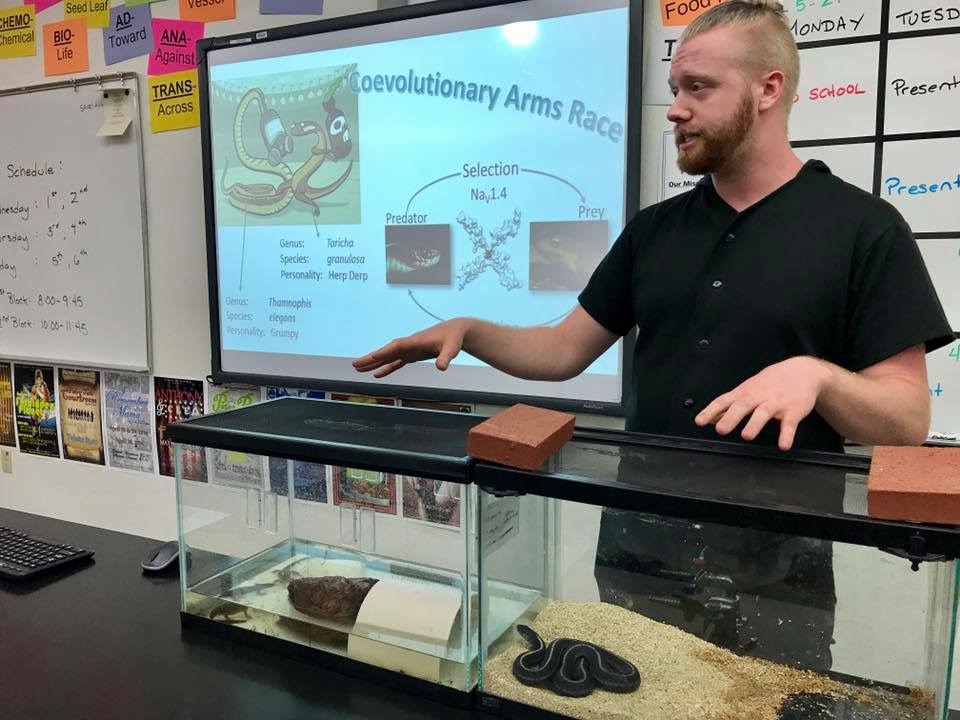 Robert Eugene del Carlo, Cell & Molecular Pharmacology & Physiology Ph.D. program
Robert Eugene del Carlo, Cell & Molecular Pharmacology & Physiology Ph.D. program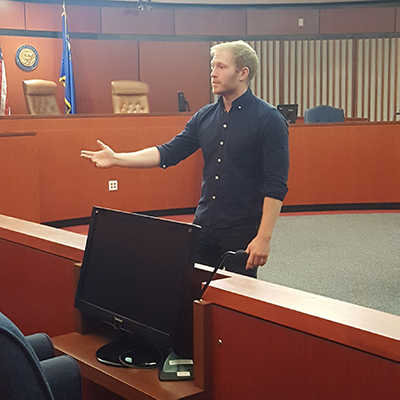 Charles Edwards, Interdisciplinary Social Psychology Ph.D. Program
Charles Edwards, Interdisciplinary Social Psychology Ph.D. Program